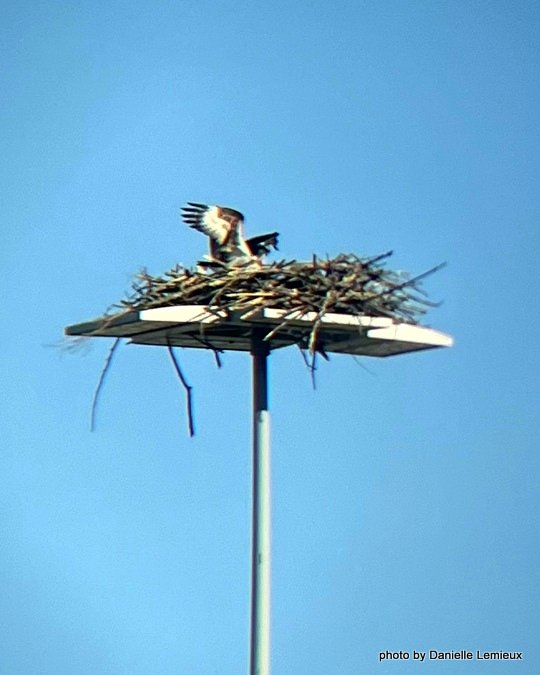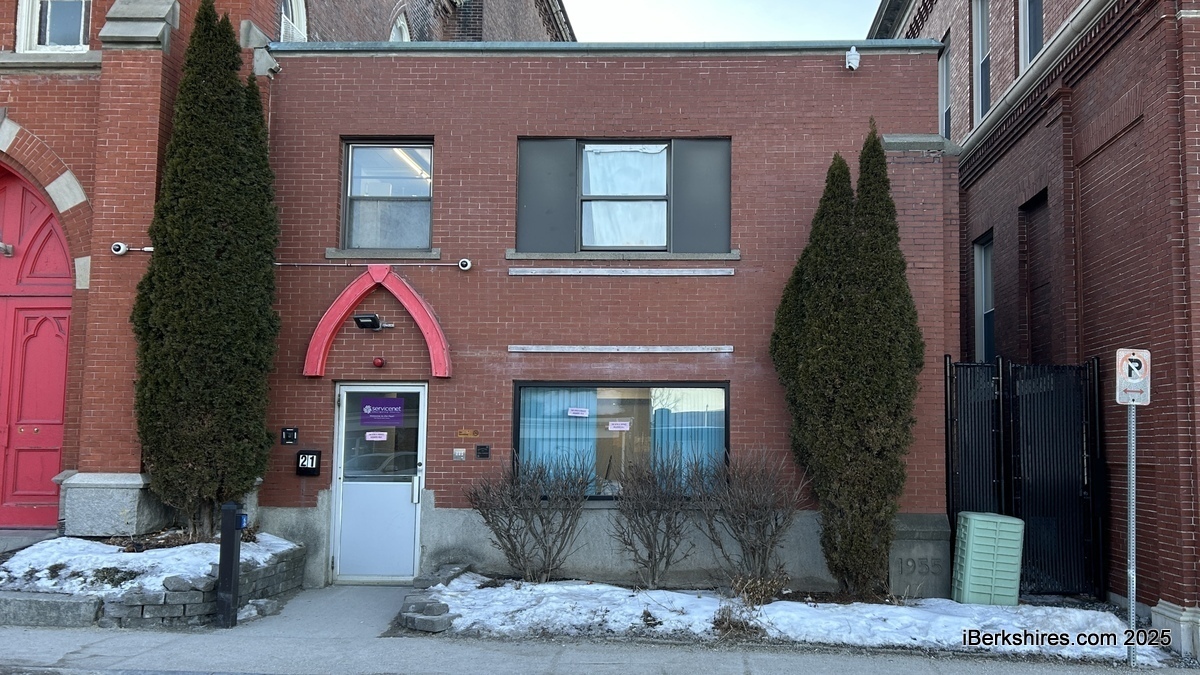
BCC Student Discovers Rare Osprey Nest

PITTSFIELD, Mass. — Danielle Lemieux was on her routine commute to class at Berkshire Community College when she spied a rare sight.
The ornithology student discovered the third osprey nest on record in the county.
While it isn't rare for the birds of prey to be seen in the area, they typically settle in coastal regions and finding a nest is "extremely unusual," said Lemieux, whose discovery last week took her environmental science education to a new level.
"It's really exciting that we have this amazing bird nesting right in our back yards," she said. "It's incredible to think about it."
Lemieux, in her third semester at BCC, was on her way to campus when she spotted the nest atop a light fixture in Lanesborough. She has a long-standing interest in wildlife and is currently enrolled in an ornithology class, a branch of zoology focused on the study of birds.
"I always look around for birds and look [while I'm] in the car because I always see something interesting and I looked off to my right and I see this big structure made of sticks on this light fixture and I'm like, 'That's interesting. That looks like a bird nest,'" she said.
"I saw these two silhouetted birds inside and I couldn't really identify them because they were so far away."
She first consulted environmental science professor Thomas Tyning, who hypothesized that it could be a red-tailed hawk nest that is common to the area, not expecting it to be a rare osprey settlement.
"They tend to nest more down south or more by the coast near larger bodies of water so it's unusual to see them nesting around here, not unusual to see the birds themselves," Lemieux explained.
"They do tend to migrate over here and some tend to stay over the summer, the juveniles will often stay over here but to have them nesting over here is extremely unusual."
Osprey will often nest on light fixtures and communities down south have built platforms to accommodate them.
On the way home from school, she got a better picture of the nest and sent it to her great-uncle, who is an avid birder and a member of the Hoffmann Bird Club. He suggested that it may be an osprey nest based on the way it was built and instructed Lemieux to keep watching it to see if she could catch the birds.
The next morning, armed with binoculars, she revisited the site and made the exciting discovery.
"I saw one fly in and I'm thinking, 'OK, it's a darker bird. It could be a red-tailed hawk, broad-winged maybe, and it lands and then I see that signature black stripe from the eyes of the back of the head, and I'm thinking, 'Oh, my God, that's osprey.'"
At school, Lemieux went to Tyning with a better picture and was informed that this was only the third osprey nest on record in Berkshire County, which she wasn't aware of at the time and was very excited about.
"They're still there. They're still kind of hanging around and I've gone back to see it a couple times," she reported. "The whole ornithology class went to go see it."
Tyning told her it was an amazing discovery and has been bragging about it since, she added.
Lemieux was recognized last week with a Falconer Award given to students in recognition of their outstanding service and/or excellence in academic studies. She said it was "very exciting" and though she has been getting great marks this semester, she was pleasantly surprised by the recognition.
During the ceremony, her discovery was announced followed by "oohs" and "aahs" from the audience.
"I was interested in birds before taking the class and I've been interested in animals and wildlife pretty much my whole life but taking this class has really blossomed my interest and my fascination with birds," she said.
"I've been birding with my Uncle Dave and finding a bunch of bird species and we've been keeping this list of all the species we see over the semester and I have 79 species on it so far."
Birding can be done mostly anywhere, including your own back yard by installing a bird feeder. Lemieux likes to walk by a stream near her house where there are sparrows and warblers but state parks and causeways are other great places to bird watch, she said.
American crows and the invasive European starlings are the most common breeds she has seen.
After college, Lemieux is considering starting in the field of ornithology and then delving into something more specified such as rodentology, another special interest of hers.
Tags: academic award, BCC, birds,
















